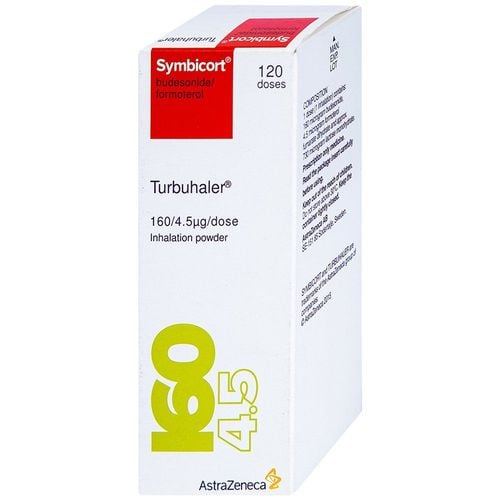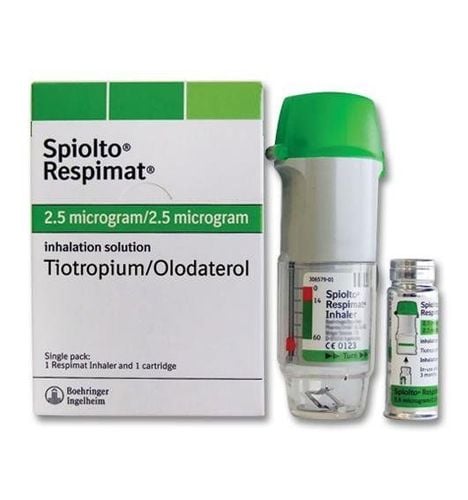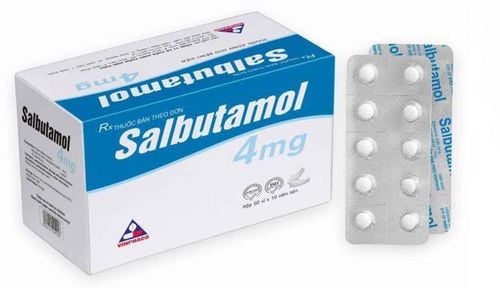This is an automatically translated article.
Sorbutuss medicine with scientific name is Guaifenesin - oral, used to treat persistent cough and obstructive lung disease caused by common cold, bronchitis and other respiratory diseases. This product should not normally be used for persistent coughs caused by smoking or persistent breathing problems (such as chronic bronchitis, emphysema) unless directed by a doctor. The following article will provide information about the uses, indications and notes when using Sorbutuss.
1. How to use Sorbutuss
Sorbutuss (Guaifenesin) is an expectorant and cough suppressant. It works by thinning and loosening mucus in the airways, clearing congestion and making breathing easier. In cases of self-treatment using this medication, it is important to read the directions on the packaging carefully before starting to use this product to make sure it is right for you. The safety and efficacy of cough and cold products have not been established in children under 6 years of age. Therefore, do not use this product to treat cold symptoms in children under 6 years of age unless specifically directed by a doctor. Some products (such as long-acting tablets and capsules) are not recommended for use in children under 12 years of age. Consult your doctor or pharmacist to use the medicine safely and effectively.
These products do not cure or shorten the duration of the common cold. To reduce the risk of side effects, carefully follow all dosage instructions. Do not give other cough and cold medicines that may contain similar ingredients or similar products that may cause drug interactions (see also Drug Interactions section). There are other ways to relieve cough and cold symptoms (such as drinking enough fluids, using a humidifier, or saline nasal drops/spray).
Sorbutuss is generally not recommended for people with persistent coughs caused by smoking or chronic breathing problems (eg, chronic bronchitis or emphysema) unless directed by a doctor. doctor. Medications can be used for self-treatment. If the patient is self-treating with this medication, follow the instructions on the product packaging. Sorbutuss pills come in many different forms and have a bitter taste, so to avoid the bitter taste, do not chew the medicine (if the medicine is in pill form). The drug can be taken with food or taken before or after a meal. With tablets, do not split the tablets unless they have an index mark and have been told to do so by your doctor or pharmacist. The tablet should be swallowed whole without crushing or chewing to reduce its bitter taste. For liquid drugs it is necessary to measure the dose accurately with a special measuring device/spoon. Do not use household spoons because dosing is no longer accurate. For powder sachets, pour the entire dose onto the tongue and swallow. In addition to using this medicine, the patient can combine with other ways to relieve cough and cold symptoms such as: drinking enough water, using a humidifier or drops / nasal spray with physiological saline.
Dosage is based on the patient's age, medical condition, and drug response. It is not recommended to take more than 6 doses/day. Do not increase the dose on your own or use the medicine more often than directed. While taking the drug, the patient should also monitor the symptoms of the disease. If the cough is accompanied by fever, severe sore throat, rash, persistent or recurrent headache, notify your doctor immediately before continuing to use the medicine. These symptoms could be signs of a serious medical problem.

Thuốc Sorbutuss được sử dụng theo hướng dẫn của thầy thuốc
2. Sorbutuss side effects
During the use of the drug some unwanted effects may occur including: dizziness, drowsiness, vomiting or nausea. As with the introduction of any foreign substance into the body, a serious allergic reaction can occur with this medicine, but very rarely. However, serious allergic reactions should be noted including: rash, itching/swelling (especially of the face, tongue or throat), severe dizziness, trouble breathing. If any of the above symptoms appear, you should immediately notify the treating doctor or immediately go to the nearest medical facility (for patients who self-medicate with this medicine) for timely care. Most of the time this medication is used without serious side effects. However, all possible side effects are not listed here, it is necessary to carefully monitor the body's condition when using the drug and immediately notify the medical facility or treating doctor when there are signs. abnormal signal.
3. Drug interactions
Using this medicine with certain other medicines can cause drug interactions, change how the medicine works, and increase the risk of serious side effects. This article lists some possible drug interactions, not including all possible drug interactions, and users should carefully read the instructions for use on the product packaging before use. . Using this medicine with certain monoamine oxidase (MAO) inhibitors can cause serious drug interactions, possibly even death. Therefore, avoid using isocarboxazid, methylene blue, moclobemide, phenelzine, procarbazine, rasagiline, safinamide, selegiline, or tranylcypromine during treatment with this medicine. Most monoamine oxidase inhibitors should also not be used for 2 weeks prior to treatment with this medicine. Rolapitant is also a product that is thought to interact with Guaifenesin. Guaifenesin and dextromethorphan are available in both prescription and over-the-counter medications, so check the labels of all medications you are taking while using this medication to make sure that you are not using more than 1 product containing Guaifenesin and dextromethorphan. Using this medicine may also affect the results of certain tests, such as the concentration of certain acids in the urine.
Please dial HOTLINE for more information or register for an appointment HERE. Download MyVinmec app to make appointments faster and to manage your bookings easily.
Reference sources: webmd.com, rxlist.com












